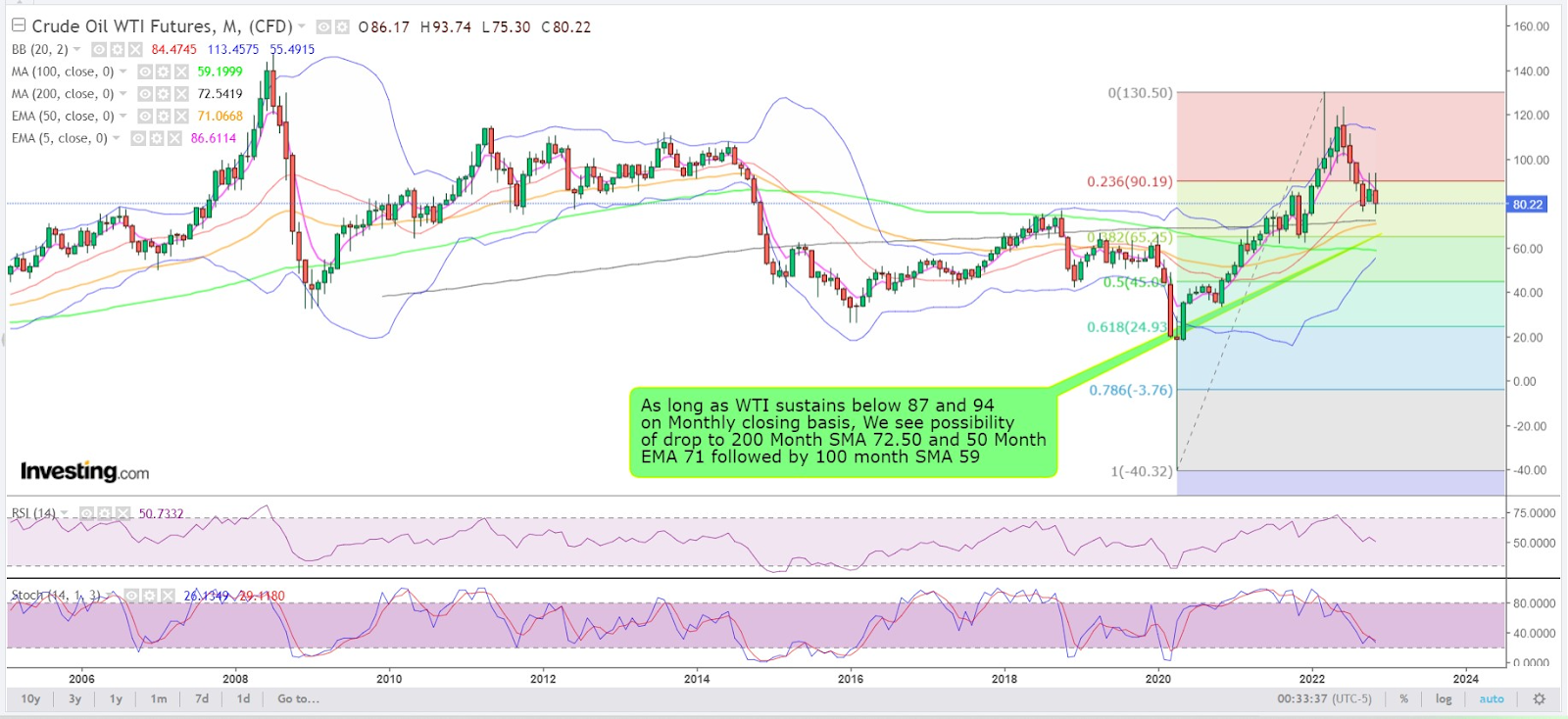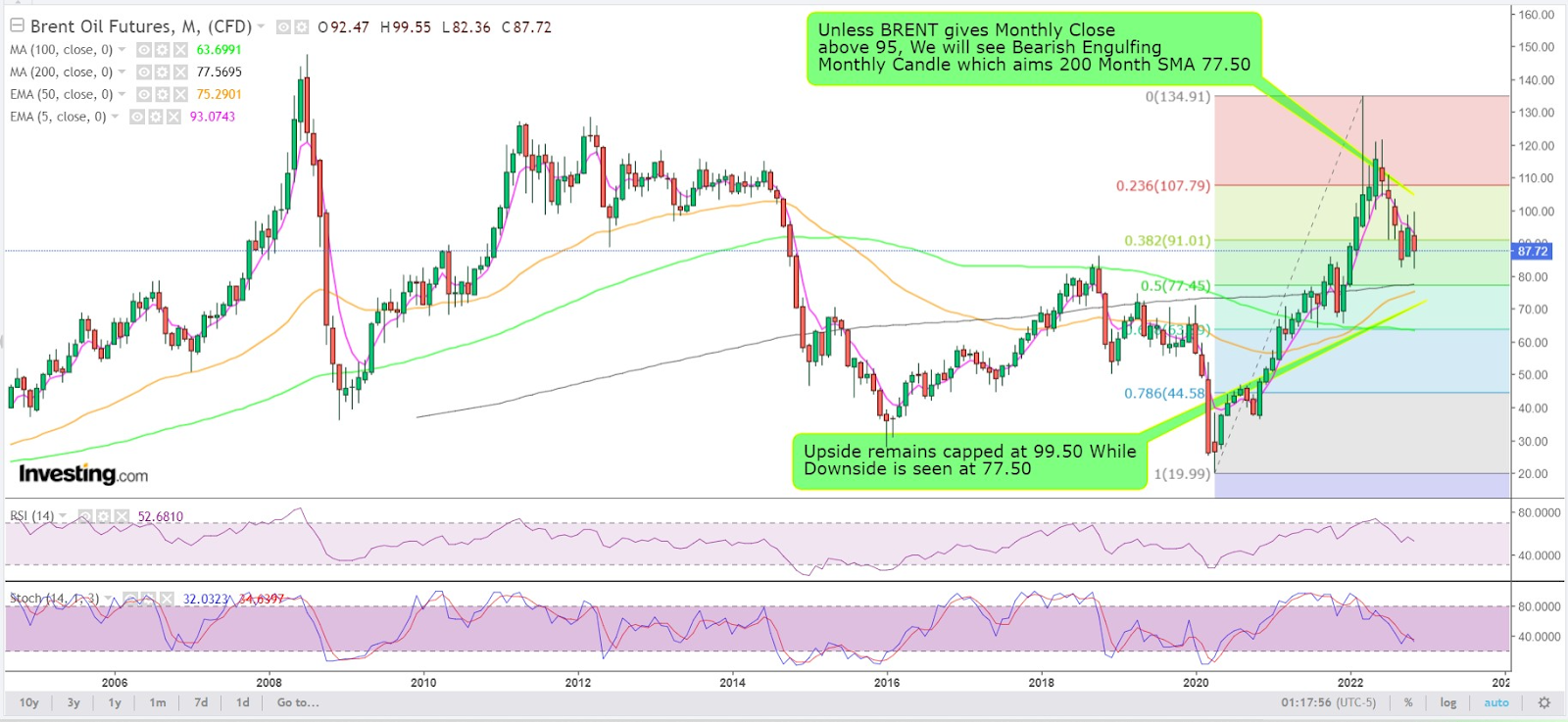Oil’s Dilemma: What’s Bigger Now, OPEC+ Cuts or COVID in China?
2022.11.22 07:19
[ad_1]
- OPEC+ seems headed for output cut on Dec. 4
- Top oil importer China COVID problem as troubling as 2020
- Oil market finding it hard to decide which is bigger issue
With less than two weeks before its next meeting, OPEC+ has left no doubt in our minds on what it most likely will do come Dec. 4:
Announce another production cut—modest or as significant as the last one—to add to the oil market’s fear of a supply squeeze.
This planned course of action was most evident on Monday when Saudi Energy Minister Abdulaziz bin Salman—who practically runs the 23-nation oil-producing alliance—denied a Wall Street Journal report that OPEC+ was entertaining a production hike to be announced in two weeks.
“It is well-known that OPEC+ does not discuss any decisions ahead of the meeting,” Abdulaziz said in comments carried by Riyadh’s state news agency SPA.
He went on to say that the 2 million barrel per day (bpd) cut that took effect from the start of this month will continue until the end of 2023—a timeline OPEC+ had not made explicit before. However, Abdulaziz stressing this meant that an artificial shortage of 2 million barrels will be forced on the market for another 12 to 13 months, without immediate regard for oil demand in that period—which actually could be higher.
But the real bomb in Abdulaziz’s messaging was in another sentence he uttered:
“If there is a need to take further measures by reducing production to balance supply and demand, we always remain ready to intervene.”
In OPEC+ speak, it was as clear as day what the alliance intended to do in order to restore pricing to a market that had lost a stunning 20% of its value over the past two weeks—all that it had gained right after the commencement of its November production cut.
London-traded , the international gauge for oil prices, went from a low of around $82 a barrel to almost $100 within days of OPEC+’s announcement of the November cut (it was at $140 in March, before the start of a seven-month long grind down in oil prices).
On Monday though, Brent sank to below $83 a barrel, its weakest since February, before Abdulaziz’s remarks virtually brought it back into positive territory with a settlement of $87.45.
New York-traded (WTI) crude climbed from around $76 a barrel to about $96 after the November production cut announced by OPEC+. (WTI was at just over $130 in March). But on Monday, the US crude benchmark tumbled below $76, its lowest since January, before rebounding on Abdulaziz’s remarks to settle modestly lower on the day, at $75.30.

All charts by SKCharting.com, with data powered by Investing.com
Sunil Kumar Dixit, chief technical strategist at SKCharting.com, said oversold conditions could push WTI back towards the 100-week Simple Moving Average of $81.30.
“It has to get to and close above $80. Otherwise, there’s always the danger of it moving towards the lows of $72.50 and $71.”
Brent, Dixit said, could progress to between $91 and $95 if it builds on the momentum from Monday’s rebound.
“But really, it needs to close above $99.60 in order to take it up towards $107.80.”

Monday’s rebound in oil was also aided by Russian Deputy Prime Minister Alexander Novak—who is Abdulaziz’s closest non-Gulf ally in OPEC+. Right after the Saudi energy minister’s statement, as if on cue, Novak came up with his own responses to the Dec. 5 import ban and price cap on Russian oil scheduled by Western nations.
He reiterated Russia’s stand of not selling its oil to any country that would participate in the price cap, a plan devised by the West to limit the funding that Moscow could raise for its war against Ukraine. Like Abdulaziz, Novak also issued a veiled threat of tighter supplies to come. In the event it is hit with an oil price cap, Russia may reduce its production, Novak said.
“Lower supply will be the result from a price cap on Russian oil,” the Russian deputy premier added.
The 2 million barrel cut for November itself did not augur well for relations between the United States and Saudi Arabia. The Saudis lead the 13-member Organization of the Petroleum Exporting Countries that forms the core OPEC group within OPEC+. Russia and nine other oil-producing nations make up the rest of the alliance.
OPEC+’s November production cut resulted in a brief oil price spike just ahead of the US midterm election, prompting President Joseph Biden to warn Saudi Arabia of “consequences” for its actions.
For the upcoming Dec. 4 meeting, US officials had actually been counting on OPEC+ to announce a cut of around 500,000 bpd, since demand for oil is typically higher during the winter, particularly for , the Wall Street Journal (WSJ) reported.
Some delegates to the OPEC+ apparently told WSJ that a production increase could take place in December in response to expectations that oil consumption typically rises in the winter. Oil demand is expected to increase by 1.69 million bpd to 101.3 million bpd by the first quarter next year, compared with the average level in 2022.
Saudi energy minister Abdulaziz has also said in the past the kingdom would supply oil to “all who need it.”
In an apparent “sweetener” for the Saudis to do a production hike, the Biden administration told a US federal court judge on Monday that Saudi Crown Prince Mohammed bin Salman should have sovereign immunity from a federal lawsuit related to the brutal killing of Saudi journalist Jamal Khashoggi. The immunity decision amounted to a concession to Mohammed, bolstering his standing as the kingdom’s de facto ruler after the Biden administration tried for months to isolate him.
Yet, the Saudis seemed more guided by something else on Monday: China’s exploding coronavirus situation, which brings us to the other point of this story.
Which really is bigger to the price of oil now—OPEC+’s production cuts or China’s slumping demand for crude amid its zero-COVID policy?
It’s akin to the chicken-and-egg situation—where each seems just as relevant as the other in terms of primacy—although here it’s a question of supply and demand, and which is more important as a price determinant.
The global oil market remains tight and that “does not bode well for a world that still relies heavily on fossil fuels”, especially with the growing sanctions on Russian oil, Saudi Aramco (TADAWUL:), Riyadh’s state-owned oil company warned earlier this month. OPEC+ may control more than 50% of global oil supplies but producing nations faced “extremely low” spare capacity, Aramco warned.
In China’s case, it has been the global oil demand driver for the last decade, accounting for 44% of worldwide growth in oil imports since 2015, when Beijing started issuing import quotas to independent refiners.
Rising coronavirus cases in China have invited new lockdown measures in some of the country’s biggest cities, drumming up concerns over slowing crude demand in the world’s largest oil importer. China is currently struggling with its worst COVID outbreak since April, which had seen several cities placed under lockdown.
A report earlier this month said that several Chinese refiners asked Saudi Aramco to supply lower amounts of oil in December, which could point to slowing oil shipments to the country. China has also ramped up its refined fuel export quotas, potentially indicating a surplus in crude stockpiles due to waning demand.
“On the surface of it, both OPEC+ and China can move oil prices in a heartbeat; that’s how competitive they are as drivers,” said John Kilduff, partner at New York energy hedge fund Again Capital.
“It’s essentially supply-and-demand and you can’t have one without the other. Yet, in the very near-term, I’ll say China’s COVID situation probably holds more sway on prices, especially if all of Beijing goes into a lockdown.”
Beijing is facing its most severe COVID test yet after the Chinese capital saw the country’s first coronavirus deaths in six months, with infections continuing to soar, reports said Monday.
Three deaths have been reported in the Chinese capital since Saturday, bringing the country’s official death toll to 5,229. The latest fatalities, coming amid rare protests over China’s zero-COVID policy, have plunged parts of the city, home to more than 21 million, back into lockdown. A full Beijing lockdown could have a disastrous impact on the Chinese economy, experts warn.
Disclaimer: Barani Krishnan uses a range of views outside his own to bring diversity to his analysis of any market. For neutrality, he sometimes presents contrarian views and market variables. He does not hold positions in the commodities and securities he writes about.
[ad_2]
Source link







